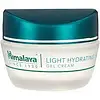What's inside
What's inside
 Key Ingredients
Key Ingredients

 Benefits
Benefits

 Concerns
Concerns

 Ingredients Side-by-side
Ingredients Side-by-side

Water
Skin ConditioningGlycerin
HumectantCyclopentasiloxane
EmollientCyclomethicone
EmollientIsopropyl Myristate
EmollientCoco-Glucoside
CleansingPhenoxyethanol
PreservativeCarbomer
Emulsion StabilisingCaprylic/Capric Triglyceride
MaskingDimethiconol
EmollientSodium Benzoate
MaskingAcrylates/C10-30 Alkyl Acrylate Crosspolymer
Emulsion StabilisingXanthan Gum
EmulsifyingPvp
Emulsion StabilisingSodium Hydroxide
BufferingCetearyl Olivate
Sodium Hyaluronate
HumectantBenincasa Cerifera Fruit Extract
Skin ConditioningOpuntia Ficus-Indica Stem Extract
Skin ConditioningParfum
MaskingEthylhexylglycerin
Skin ConditioningSorbitan Olivate
EmulsifyingDisodium EDTA
Hexyl Cinnamal
PerfumingLimonene
PerfumingBenzyl Salicylate
PerfumingButylphenyl Methylpropional
PerfumingWater, Glycerin, Cyclopentasiloxane, Cyclomethicone, Isopropyl Myristate, Coco-Glucoside, Phenoxyethanol, Carbomer, Caprylic/Capric Triglyceride, Dimethiconol, Sodium Benzoate, Acrylates/C10-30 Alkyl Acrylate Crosspolymer, Xanthan Gum, Pvp, Sodium Hydroxide, Cetearyl Olivate, Sodium Hyaluronate, Benincasa Cerifera Fruit Extract, Opuntia Ficus-Indica Stem Extract, Parfum, Ethylhexylglycerin, Sorbitan Olivate, Disodium EDTA, Hexyl Cinnamal, Limonene, Benzyl Salicylate, Butylphenyl Methylpropional
Water
Skin ConditioningCetearyl Alcohol
EmollientGlycereth-26
HumectantNeopentyl Glycol Dicaprylate/Dicaprate
EmollientSimmondsia Chinensis Butter
Skin ConditioningButyrospermum Parkii Butter
Skin ConditioningGlyceryl Stearate
EmollientSimmondsia Chinensis Seed Oil
EmollientPEG-40 Stearate
EmulsifyingPhenoxyethanol
PreservativeCaprylyl Glycol
EmollientGlyceryl Stearate Se
EmulsifyingMel
EmollientSodium Hyaluronate
HumectantPEG-50 Shea Butter
EmulsifyingCeteareth-20
CleansingParfum
MaskingXanthan Gum
EmulsifyingDisodium EDTA
BHT
AntioxidantLinalool
PerfumingCitronellol
PerfumingLimonene
PerfumingWater, Cetearyl Alcohol, Glycereth-26, Neopentyl Glycol Dicaprylate/Dicaprate, Simmondsia Chinensis Butter, Butyrospermum Parkii Butter, Glyceryl Stearate, Simmondsia Chinensis Seed Oil, PEG-40 Stearate, Phenoxyethanol, Caprylyl Glycol, Glyceryl Stearate Se, Mel, Sodium Hyaluronate, PEG-50 Shea Butter, Ceteareth-20, Parfum, Xanthan Gum, Disodium EDTA, BHT, Linalool, Citronellol, Limonene
Ingredients Explained
These ingredients are found in both products.
Ingredients higher up in an ingredient list are typically present in a larger amount.
Disodium EDTA plays a role in making products more stable by aiding other preservatives.
It is a chelating agent, meaning it neutralizes metal ions that may be found in a product.
Disodium EDTA is a salt of edetic acid and is found to be safe in cosmetic ingredients.
Learn more about Disodium EDTALimonene is a fragrance that adds scent and taste to a formulation.
It's found in the peel oil of citrus fruits and other plants such as lavender and eucalyptus. The scent of limonene is generally described as "sweet citrus".
Limonene acts as an antioxidant, meaning it helps neutralize free radicals.
When exposed to air, oxidized limonene may sensitize the skin. Because of this, limonene is often avoided by people with sensitive skin.
The term 'fragrance' is not regulated in many countries. In many cases, it is up to the brand to define this term. For instance, many brands choose to label themselves as "fragrance-free" because they are not using synthetic fragrances. However, their products may still contain ingredients such as essential oils that are considered a fragrance.
Learn more about LimoneneParfum is a catch-all term for an ingredient or more that is used to give a scent to products.
Also called "fragrance", this ingredient can be a blend of hundreds of chemicals or plant oils. This means every product with "fragrance" or "parfum" in the ingredients list is a different mixture.
For instance, Habanolide is a proprietary trade name for a specific aroma chemical. When used as a fragrance ingredient in cosmetics, most aroma chemicals fall under the broad labeling category of “FRAGRANCE” or “PARFUM” according to EU and US regulations.
The term 'parfum' or 'fragrance' is not regulated in many countries. In many cases, it is up to the brand to define this term.
For instance, many brands choose to label themselves as "fragrance-free" because they are not using synthetic fragrances. However, their products may still contain ingredients such as essential oils that are considered a fragrance by INCI standards.
One example is Calendula flower extract. Calendula is an essential oil that still imparts a scent or 'fragrance'.
Depending on the blend, the ingredients in the mixture can cause allergies and sensitivities on the skin. Some ingredients that are known EU allergens include linalool and citronellol.
Parfum can also be used to mask or cover an unpleasant scent.
The bottom line is: not all fragrances/parfum/ingredients are created equally. If you are worried about fragrances, we recommend taking a closer look at an ingredient. And of course, we always recommend speaking with a professional.
Learn more about ParfumPhenoxyethanol is a preservative that has germicide, antimicrobial, and aromatic properties. Studies show that phenoxyethanol can prevent microbial growth. By itself, it has a scent that is similar to that of a rose.
It's often used in formulations along with Caprylyl Glycol to preserve the shelf life of products.
Sodium Hyaluronate is hyaluronic acid's salt form. It is commonly derived from the sodium salt of hyaluronic acid.
Like hyaluronic acid, it is great at holding water and acts as a humectant. This makes it a great skin hydrating ingredient.
Sodium Hyaluronate is naturally occurring in our bodies and is mostly found in eye fluid and joints.
These are some other common types of Hyaluronic Acid:
Learn more about Sodium HyaluronateWater. It's the most common cosmetic ingredient of all. You'll usually see it at the top of ingredient lists, meaning that it makes up the largest part of the product.
So why is it so popular? Water most often acts as a solvent - this means that it helps dissolve other ingredients into the formulation.
You'll also recognize water as that liquid we all need to stay alive. If you see this, drink a glass of water. Stay hydrated!
Learn more about WaterXanthan gum is used as a stabilizer and thickener within cosmetic products. It helps give products a sticky, thick feeling - preventing them from being too runny.
On the technical side of things, xanthan gum is a polysaccharide - a combination consisting of multiple sugar molecules bonded together.
Xanthan gum is a pretty common and great ingredient. It is a natural, non-toxic, non-irritating ingredient that is also commonly used in food products.
Learn more about Xanthan Gum